Kick-starting seagrass for a climate-proof sea
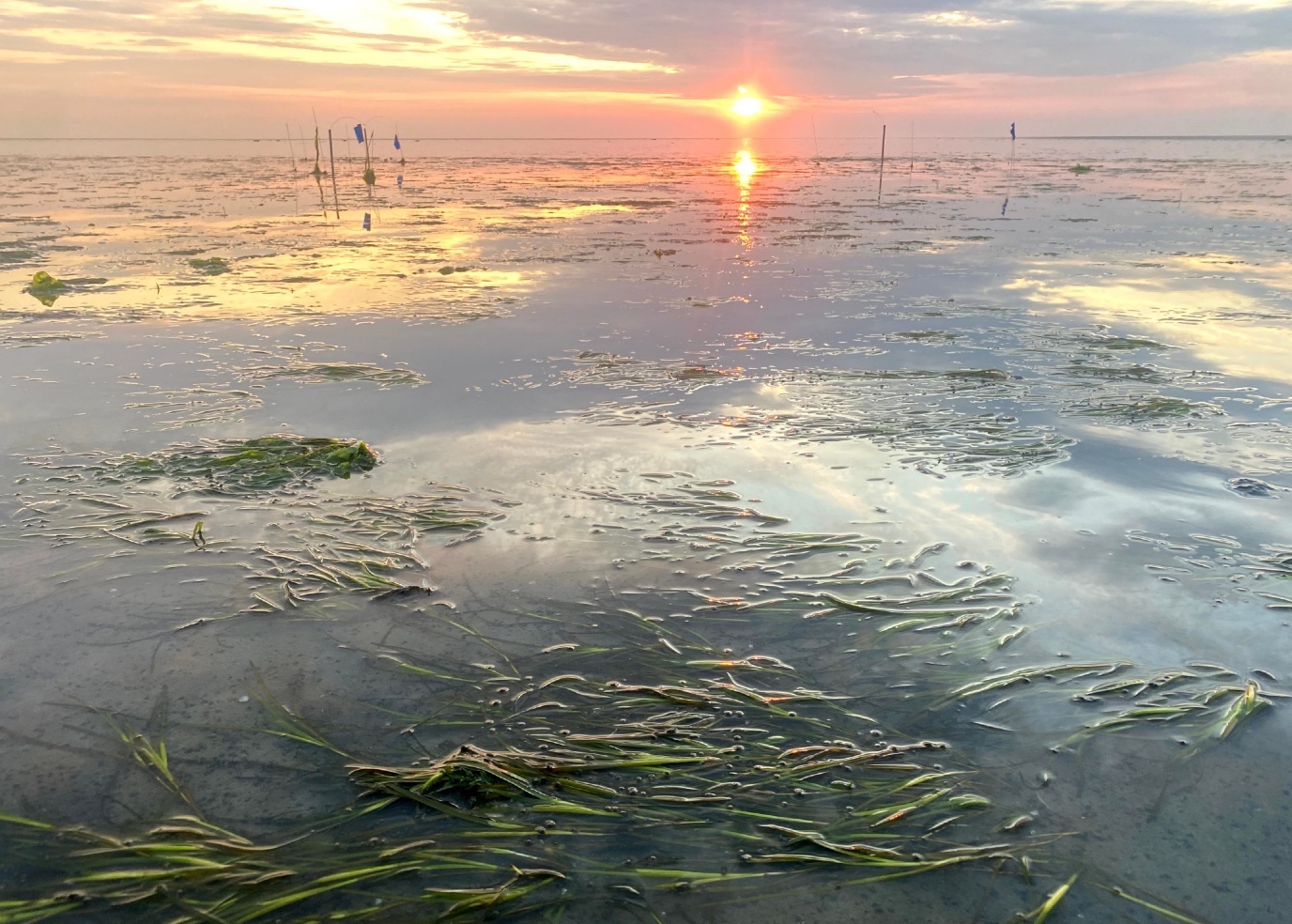
Once upon a time, seagrass meadows of about 150 square kilometres covered the bottom of the Dutch Wadden Sea. Now, seagrasses have all but disappeared, just like in many other places in the world. But these unique saltwater plants play a vital role in an ecosystem. Ecologists Jeanine Olsen, Tjisse van der Heide, and Laura Govers of the University of Groningen are working to help seagrass return to our waters. On the occasion of the World Seagrass Conference this week (17-21 June) in Naples, Italy, the BBC premieres a mini documentary on Govers’ work .
FSE Science Newsroom | Charlotte Vlek
Rows of researchers and volunteers walk along the mudflats with an adapted caulking gun, injecting a mix of mud and seagrass seeds into the sediment at specified distances. Elsewhere, 3D-printed biodegradable plastic structures are sunk into the ground to make sure that the newly planted seagrasses don’t immediately wash away. These new techniques for seagrass restoration have brought ecologists Laura Govers and Tjisse van der Heide several successes.
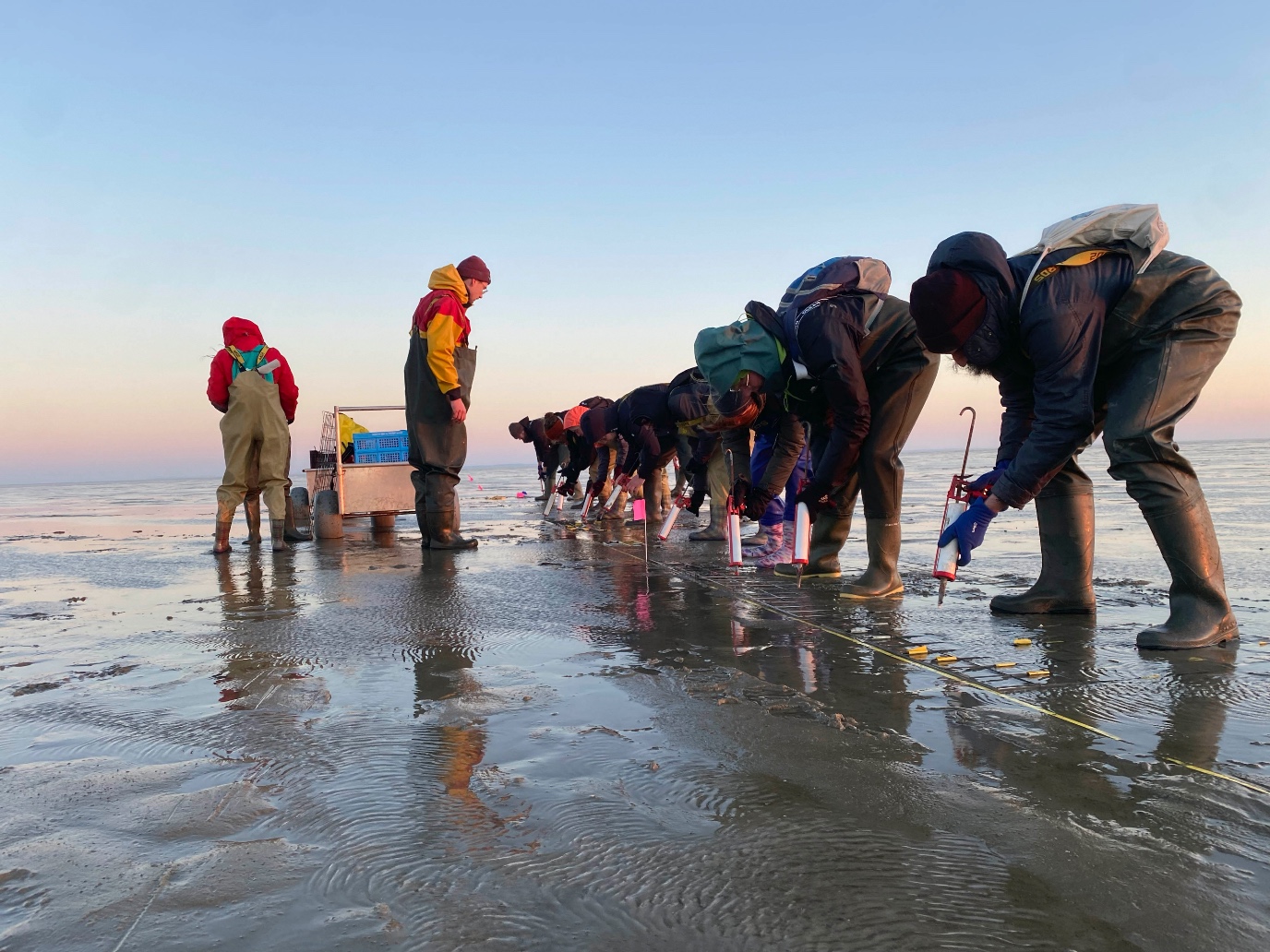
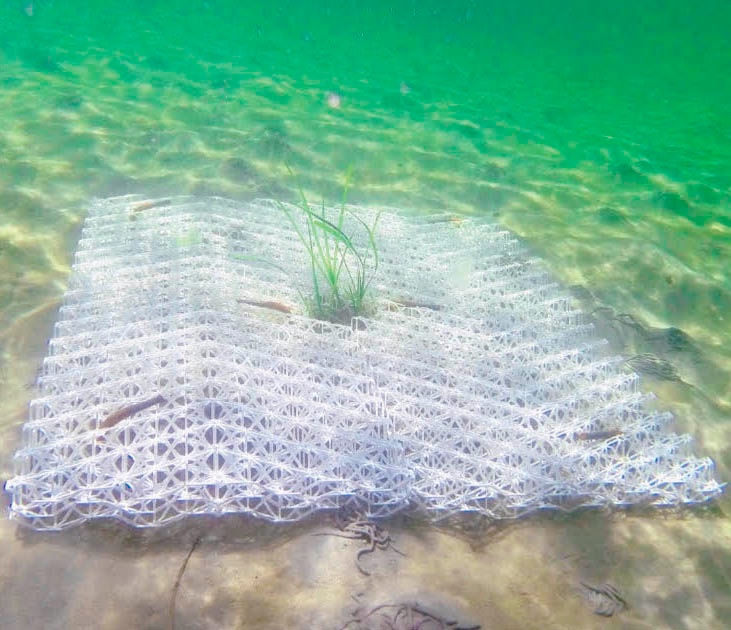
Jeanine Olsen, Emeritus Professor of Molecular Ecology, takes a different approach: she is looking at seagrass genomes in her search for climate-proof seagrass. Currently, seeds and plants for seagrass restoration projects are sometimes imported from warmer regions to stay ahead of the rising temperatures due to climate change. However, Olsen explains that simply taking plants from the Mediterranean Sea and planting them in the Netherlands is a bit too simplistic. Genetic information is needed to figure out whether a plant is compatible.
Why it is important, yet difficult
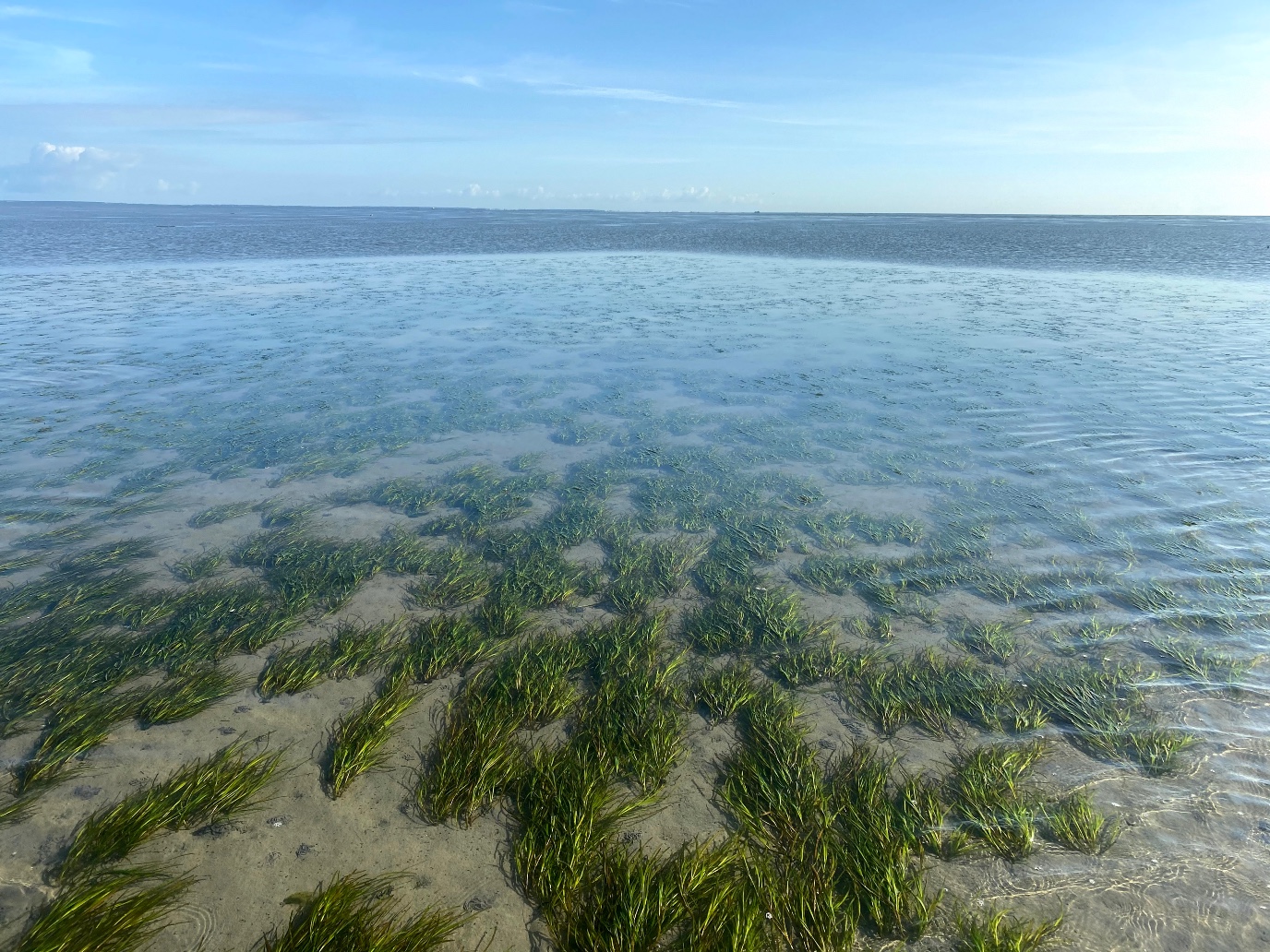
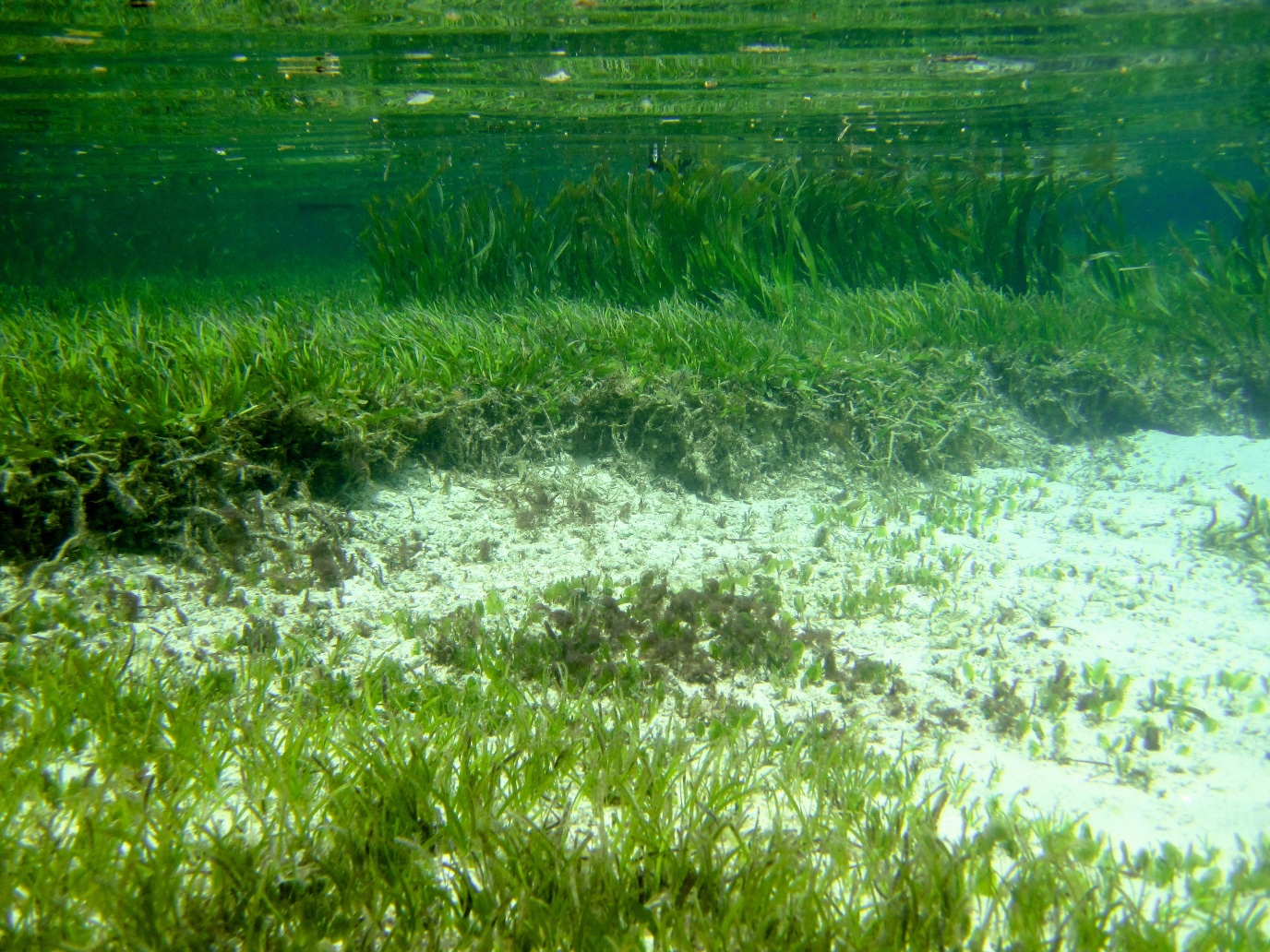
When trying to grow new seagrass, there’s a great chance the small plants are washed away.
Attempts at seagrass restoration have been ongoing for decades. This is because seagrasses play a fundamental role as the base for an ecosystem. Seagrass meadows provide shelter and food for marine animals, keep the sediment from eroding, and store a lot of carbon. But once seagrass has disappeared from a place, it’s difficult to get new plants to grow back again.
This is because seagrass has many beneficial effects on its environment, from which the seagrass benefits in turn: seagrass stabilizes the sediment, traps floating mud particles, dampens the waves, and adds oxygen to the sediment. Unfortunately, these positive effects only occur once a large seagrass meadow has been established. Van der Heide: ‘When trying to grow new seagrass, these positive effects are not taking place yet, and there’s a great chance the small plants are washed away.’
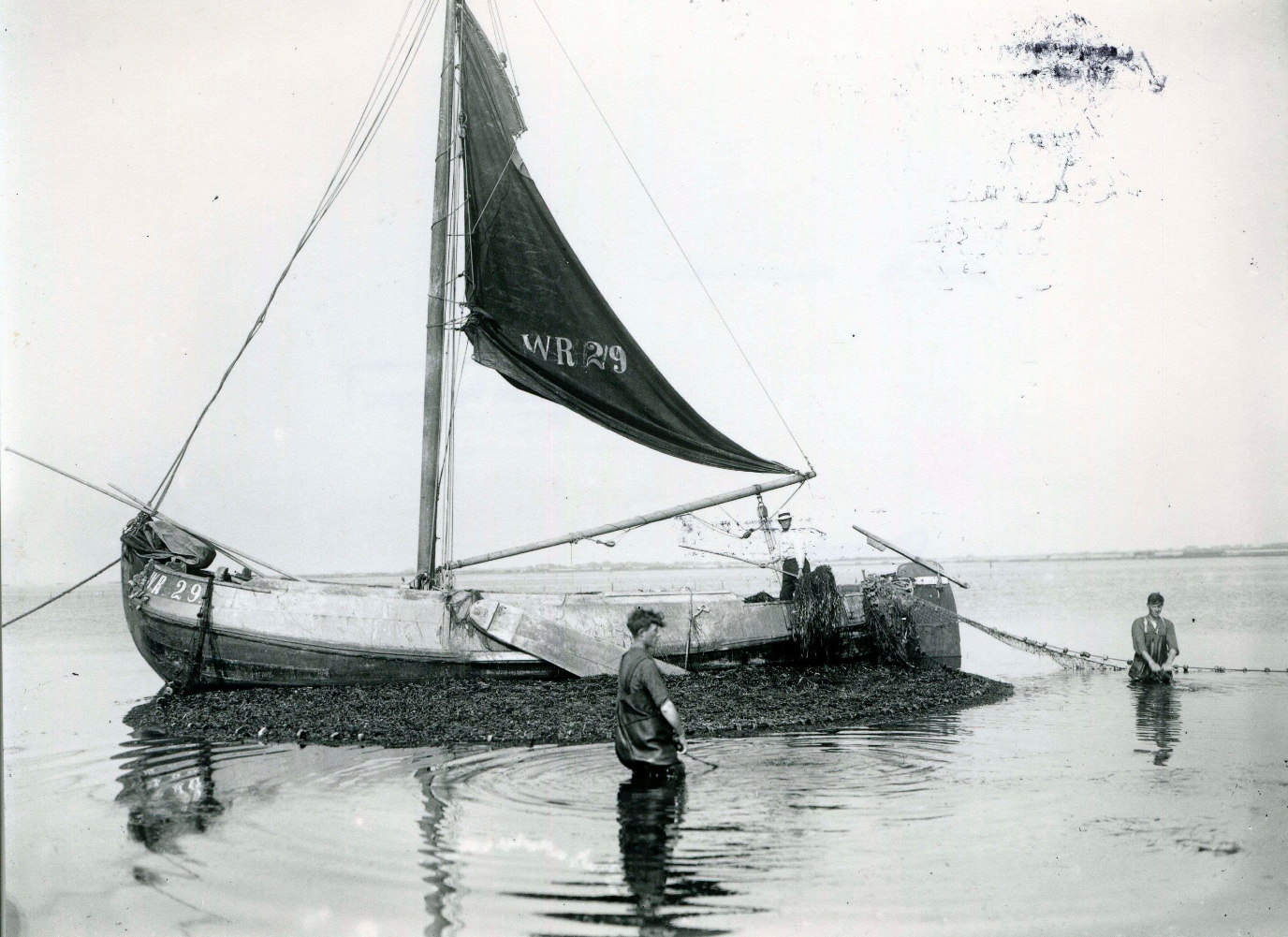
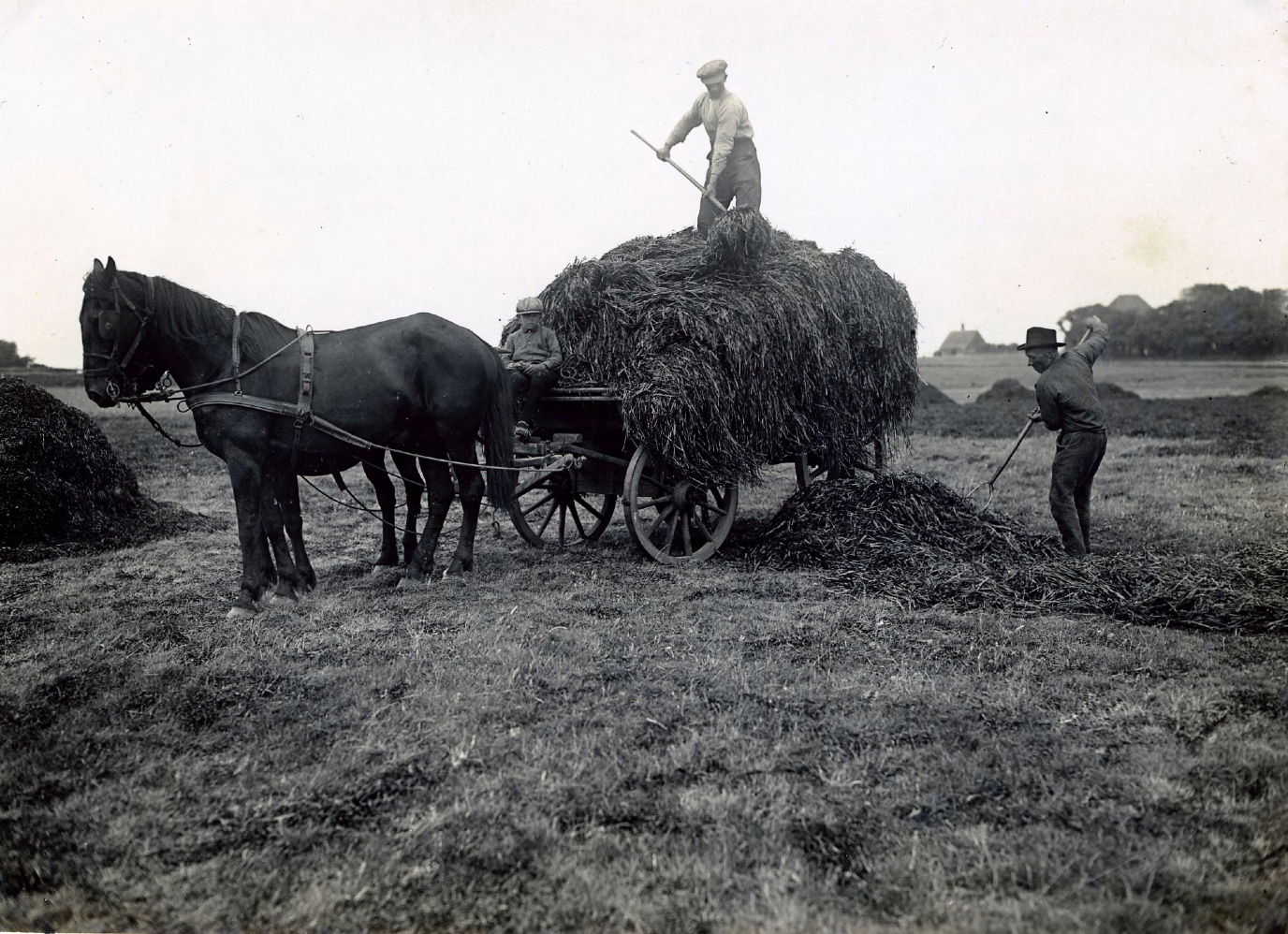
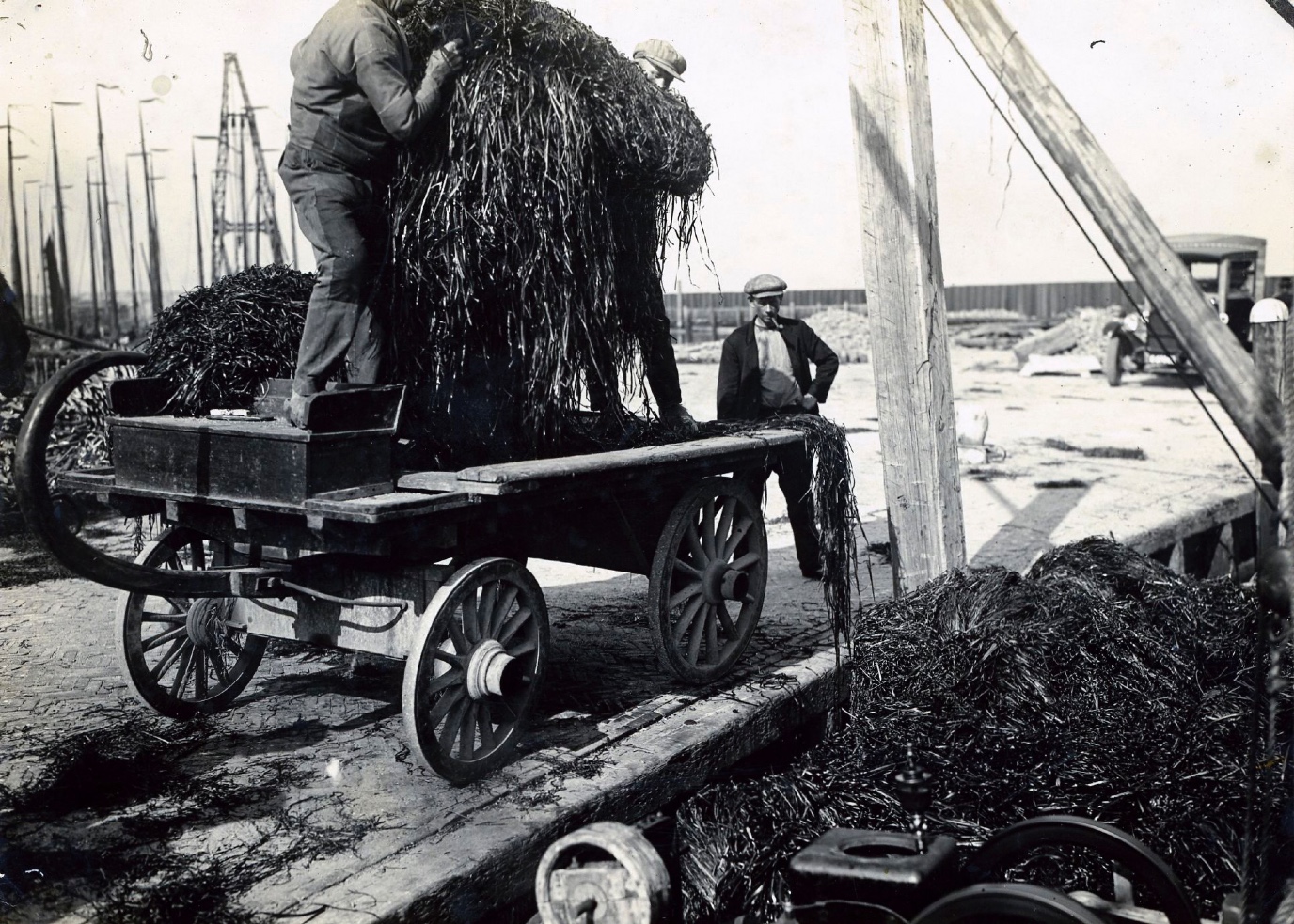
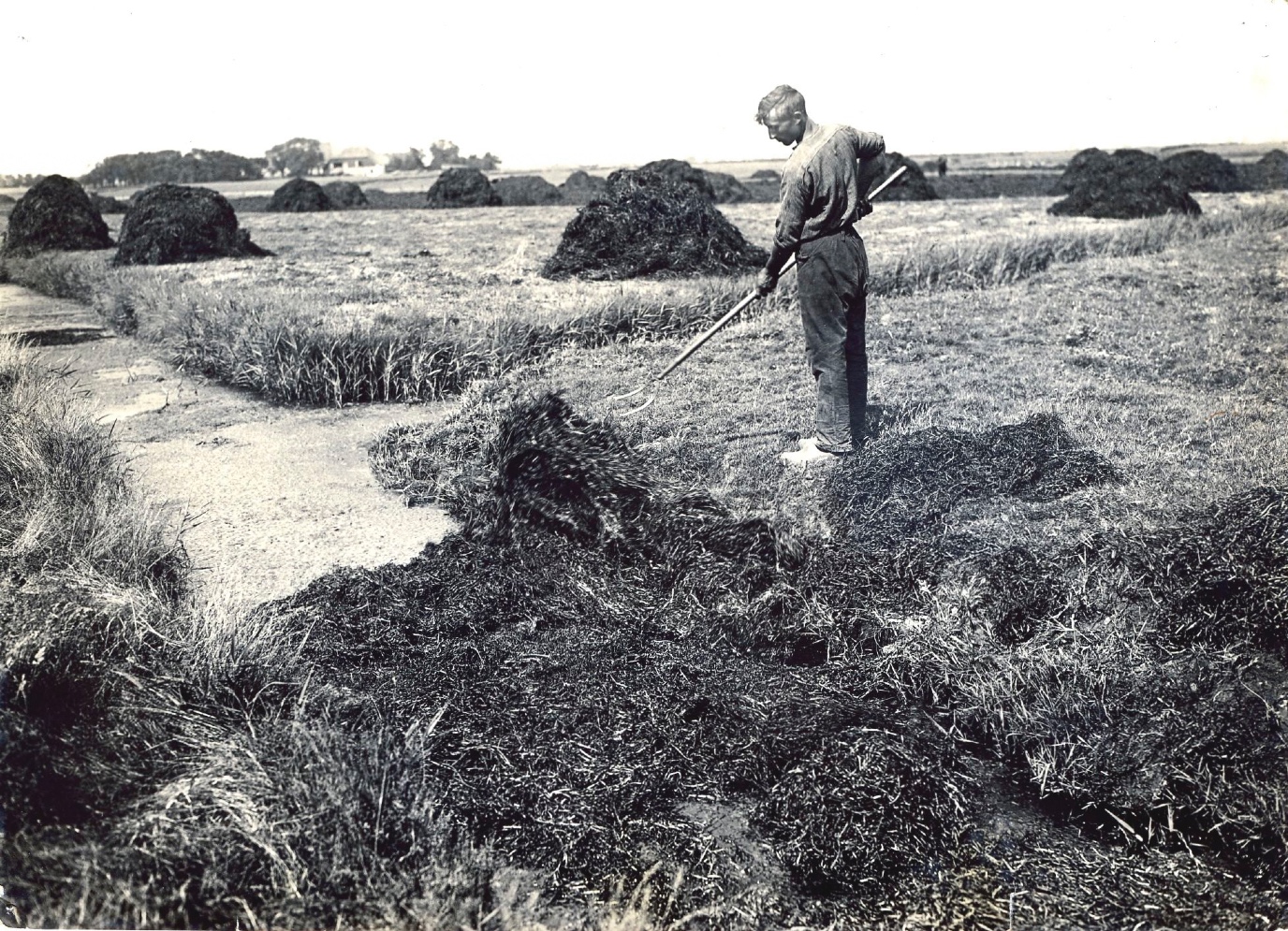
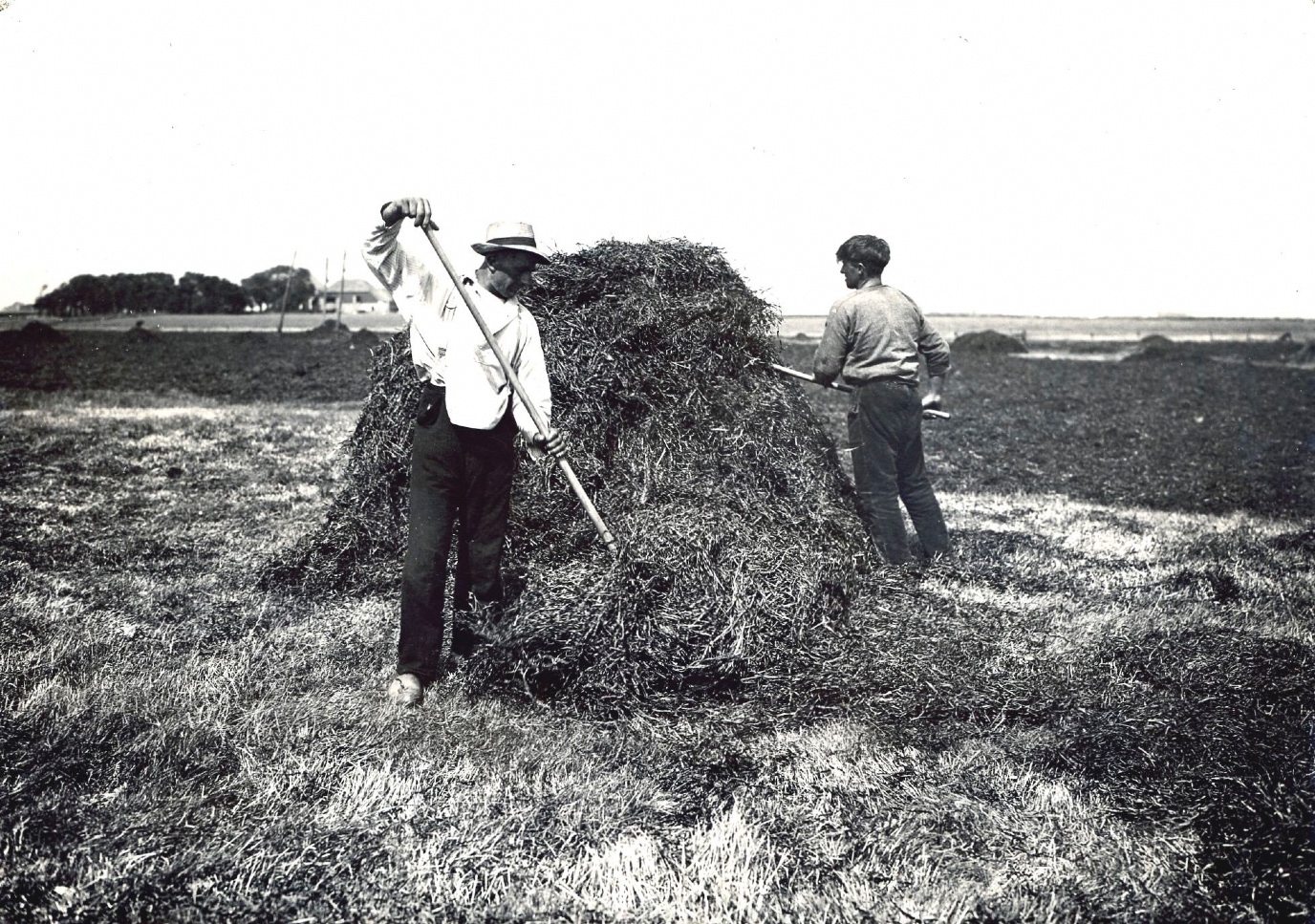
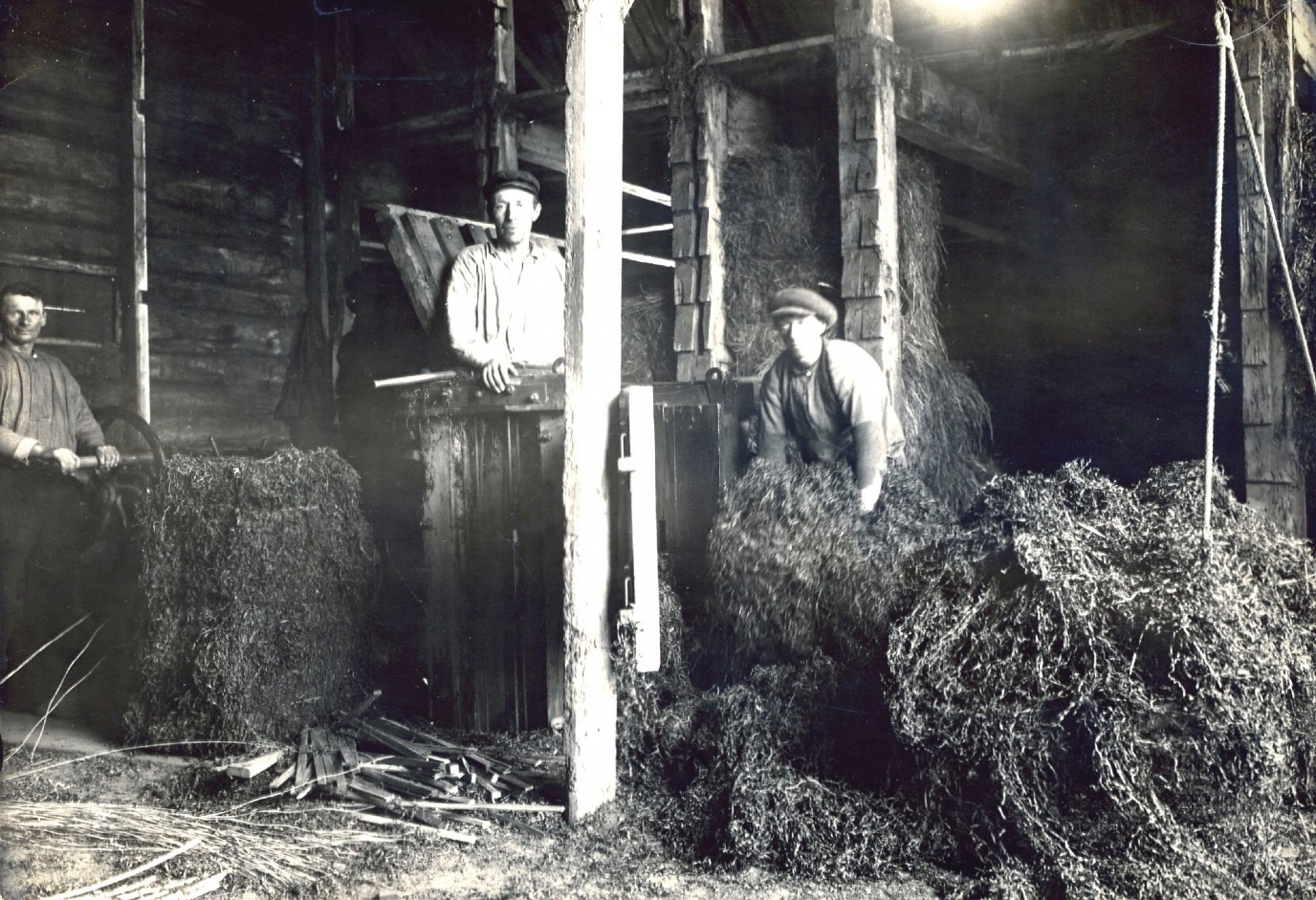
The downfall of seagrass in the Netherlands
Once upon a time, the Netherlands had a thriving seagrass industry: the ‘wiervisserij’. Seagrass meadows were mowed and the retrieved material was used to fill matrasses, build dykes, and fill up holes in whaling boats.
A combination of factors led to the loss of seagrass in the early 1930s: the construction of the dam and causeway Afsluitdijk clouded the water due to sand and clay that was deposited, and altered the currents in the Wadden Sea area. Then, the so-called wasting disease hit, and the many square kilometres of seagrass were reduced to less than one square kilometre, and all subtidal seagrass was lost.
The dispenser injection seeding method
With our seed injection method, we’ve found a way to give these seeds a better chance.
Govers: ‘Before, seagrass shoots with seeds were hung in the sea in mesh bags and the seed would mostly wash out and get lost. Out of millions of seeds, only a few would successfully grow where they were seeded. With our seed injection method, we’ve found a way to give these seeds a better chance.’ Govers investigated exactly at what depth and at what distance from each other these seeds should be injected for optimal results.
Thanks to this method, the largest restored intertidal seagrass meadow worldwide can now be found next to the small Wadden Island Griend. Seagrass meadows can be one of two types: subtidal seagrass always grows underwater, while intertidal seagrass emerges above water during low tide. This last type is typically an annual plant that produces many seeds, which makes it a suitable candidate for the seed injection method.
Govers plants the seeds in collaboration with local and national organizations, but the method has been picked up worldwide and is now used in restoration projects in England, Wales, France, the US, and Australia, to name a few. ‘Each of these projects makes their own adjustments to our method,’ Govers explains, ‘because what’s effective in one system, can be very ineffective in another.’
Integrating research and action
Govers, Van der Heide, and Olsen all emphasize the importance of gathering scientific knowledge from different disciplines. Olsen explains: ‘We need to understand plant capacities in order to ultimately achieve long-term restoration—just as plant breeders do.’ Similarly, it is of vital importance for Van der Heide’s 3D-printed structures to know exactly which beneficial properties of an existing seagrass bed should be simulated.
‘At the same time, the work we’re doing now is very urgent,’ Govers says. ‘We can’t wait until we have gathered all the knowledge we need before going into the field; we also need to weigh the costs of acting now versus not acting.’ That is why she is already working on large-scale seagrass restoration projects in various locations. Govers: ‘And even when we fail, we still learn from it. As long as you know why you failed.’
It works! But for now it is a case of good concept, bad execution.
Imitating good circumstances
There are fewer success stories about subtidal seagrass—the kind that always grows underwater. These plants are often perennial, and as a result, the positive effects they have on their environment has a bigger factor in their success. ‘So we thought: can we simulate these positive effects?’ Van der Heide says. ‘This way, we can help the plants to get beyond the difficult first step of establishing a new seagrass meadow.’
Van der Heide’s biodegradable structures dampen the waves and stabilize the mud. ‘And it works!’ he reports. ‘But for now it is a case of good concept, bad execution.’ That is because the bioplastic used to produce these structures, in collaboration with the industry, turned out to need a lot of time to degrade. In the meantime they disintegrated, leaving pieces of material floating around in the sea.
But Van der Heide recently obtained a grant to develop new prototypes for seagrass restoration as well as for mussel beds and salt marsh plants. Van der Heide: ‘We bought a second-hand robotic arm from a car factory to be able to 3D-print, and we’re now going to try to develop new materials as well as new shapes. So I’m becoming an industrial designer as well as an ecologist!’
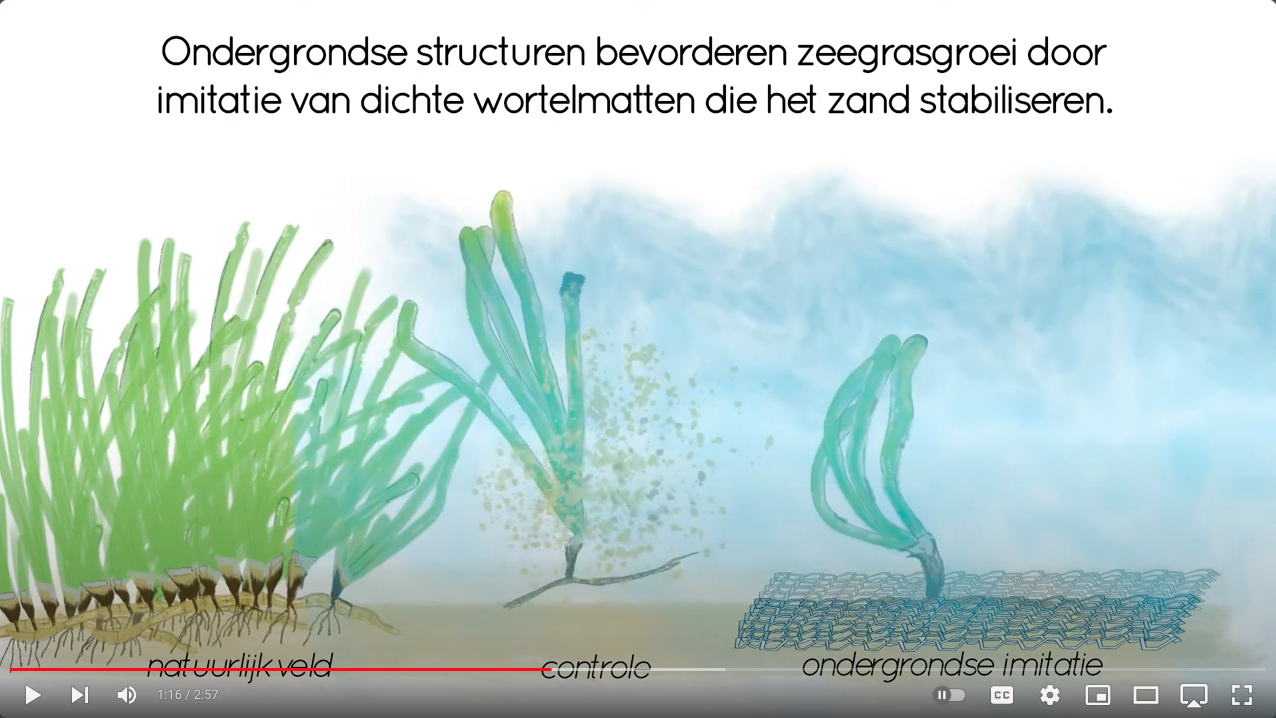
This will help to ensure that the right plants are introduced in the right places.
Searching for the best candidates
Seagrass seeds and plants for restoration projects are normally taken from nearby locations, such as the German Wadden area in case of the Dutch Wadden Sea. But, on the basis of the plants’ genome, Olsen and her colleagues from Sweden, Germany, and the US are now able to pinpoint specific genes for ecologically important traits. Olsen: ‘This will help to ensure that the right plants are introduced in the right places.’
For instance, Olsen and her colleagues can use this information to find out how plants deal with rising temperatures, varying salinity, cloudy water, or ocean acidification. ‘One of the coolest findings so far,’ Olsen reports, ‘is the fact that genes are often duplicated.’ With two of the same gene, the plant can safely ‘experiment’ with one of them, without the risk of self-extinction.’
| Last modified: | 07 February 2025 12.36 p.m. |
More news
-
03 April 2025
IMChip and MimeCure in top 10 of the national Academic Startup Competition
Prof. Tamalika Banerjee’s startup IMChip and Prof. Erik Frijlink and Dr. Luke van der Koog’s startup MimeCure have made it into the top 10 of the national Academic Startup Competition.
-
01 April 2025
NSC’s electoral reform plan may have unwanted consequences
The new voting system, proposed by minister Uitermark, could jeopardize the fundamental principle of proportional representation, says Davide Grossi, Professor of Collective Decision Making and Computation at the University of Groningen
-
01 April 2025
'Diversity leads to better science'
In addition to her biological research on ageing, Hannah Dugdale also studies disparities relating to diversity in science. Thanks to the latter, she is one of the two 2024 laureates of the Athena Award, an NWO prize for successful and inspiring...
